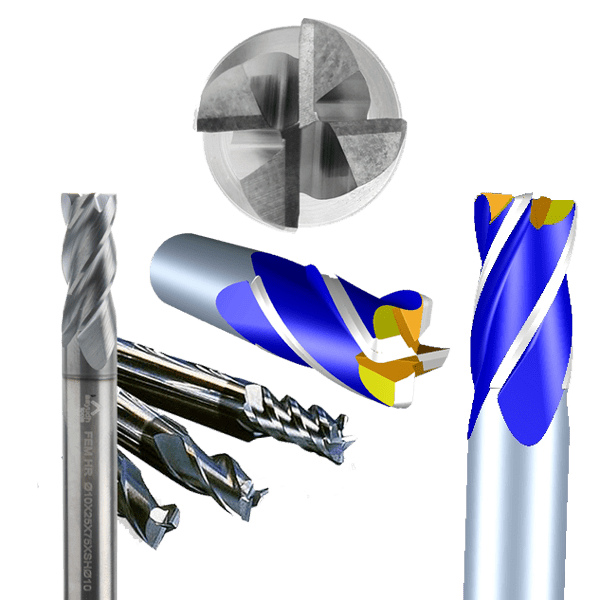End mills generally carry out of milling operations like slotting, edge milling, profiling, cavity milling. In solid carbide the endmills are normally less than diameter 20mm. Endmills are normally of two types.
- 90 degree approach angle for operations like slotting, edge milling, etc ; the geometry of such endmills is defined by the helix angle of the flute, no of flutes, the radial rake angle & the core diameter.
- Endmills for profiling, contouring, cavity milling like corner radius, taper endmills, ball nose, etc.
Aayudh Tools manufactures a wide range of solid carbide endmills of high quality for each of the above type of applications; in the standard and also in customised dimensions. Further each of these endmill types are optimised for the application.
Aayudh Tools manufactures a wide-range of solid carbide end mills of high quality, of each of the above type and are optimised for the application.
Depending on the application of the tool we offer unique combos of Grades, Geometries & Materials like:
- Variable helix & staggered teeth combinations.
- High helix end mills.
- Flute deepening end mills
- Roughing & Finishing End Mills.
- High feed geometries
- High efficiency endmills for machining aluminium alloys.
- Corner radius & ball nose endmills for different hardness of dies (42-48 HRC, 55HRC, 60HRC)
- Profiling geometries & coatings for machining cavities in dies, stainless steel, titanium , Inconel, etc components.
Since solid carbide endmills generate radial forces in almost all the above applications, it is necessary to hold them in rigid & concentric tool holders, which will grip the tools firmly & with minimum TIR. Generally such holders are hydraulic or shrink fit or ER collet holders.
In applications like heavy duty slotting or edge milling; in such applications a 50 degree helix(lower radial forces) is considered to be optimum but, because of the higher axial forces, there is a tendency for small movements of the tool shank in the holder; these micro-movements of the tool shank can cause the tool to get pulled out in machining. In such cases, if an alternate , more rigid or positive lock holding is not possible we can offer equally efficient endmills with lower helix- upto 30degrees(lower axial forces) to work within the capacity of the tool holding. The griping capacity of the tool holder increases with a lower helix (30 degree – lower axial forces) .This means that tool holding will play a major role in deciding the helix of the endmill with all other factors of the application remaining constant.
The end-face geometry of the endmill is also application dependant. For eg: in an endmill with corner radius, it is also important to consider chips getting clogged at the bottom of the endmill for which sufficient space has to be created while designing the gash in the endmill & merging it with corner profile. Aayudh specialises in this and can offer you the right end-face geometry after studying your application.



